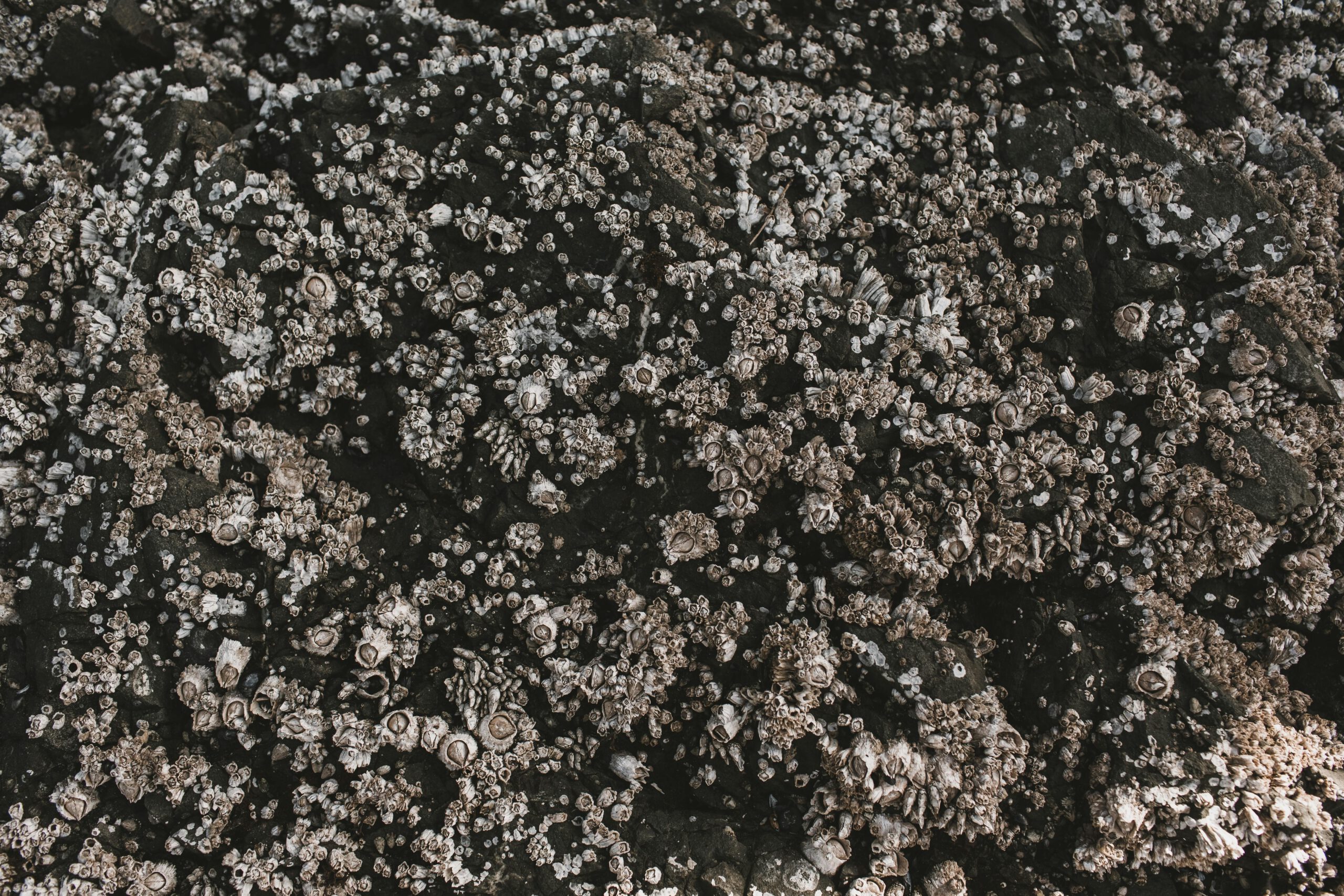Barnacles (Cirripedia subclass)

Seahorse (Hippocampus) - Zeepaardje
- Taxonomy: Barnacles belong to the Cirripedia subclass within the class Crustacea. These marine creatures are related to crabs and lobsters.
- Species: There are over 1,000 species of barnacles, ranging from tiny ones just a few millimeters long to larger species up to 7 cm.
- Reproduction: They are hermaphroditic, meaning they have both male and female reproductive organs. Fertilization happens internally, and they release free-swimming larvae into the water.
- Habitat: Found in oceans worldwide, barnacles attach themselves to hard surfaces like rocks, ship hulls, and even other animals like whales.
- Diet: They are filter feeders, using their feather-like appendages (cirri) to capture plankton and detritus from the surrounding water.
- Conservation: While not endangered, barnacles play a vital role in the ecosystem as they contribute to biodiversity and serve as a food source for various predators.
- Unique Anatomy: They have hard, calcareous shells that protect their soft bodies. When underwater, extend their cirri to feed and they retract them when exposed to air.
- Lifespan: Depending on the species and environmental conditions, barnacles can live from a few years to over a decade.
Barnacles: Tiny but Tenacious Sea Creatures
They are fascinating marine animals, known for their ability to cling to almost anything in the ocean. From ship hulls to rocks and even other animals like turtles and whales, barnacles make their home on many surfaces. While they might seem small and insignificant, these creatures have a unique lifestyle that sets them apart in the animal kingdom.
What Are Barnacles?
Belong to the subclass Cirripedia, which is part of the larger Crustacea class, making them relatives of crabs and lobsters. Despite their hard, shell-like appearance, barnacles are more closely related to these soft-bodied crustaceans. They attach themselves permanently to surfaces as adults and build a hard shell around their bodies for protection.
Life as a Filter Feeder
Barnacles feed by extending feathery appendages. Known as cirri, from their shells to capture tiny plankton from the water. This filter-feeding system allows them to eat without needing to move, which is particularly useful when they are fixed in place. Once the tide goes out, they close their shells tightly to prevent drying out.
Reproductive Adaptations
One of the most interesting facts about them. Is their reproduction. As hermaphrodites, they possess both male and female reproductive organs. However, despite this, barnacles often require a nearby partner for cross-fertilization. After fertilization, barnacle larvae are released into the water and drift with the currents until they find a surface to settle on, where they will spend the rest of their lives.
Where Barnacles Live
They are found in oceans worldwide, from the polar regions to the tropics. They are often seen clinging to rocky shores, piers, boats, and even animals. This ability to survive in various environments has made them highly adaptable and widespread.
Ecological Importance
While they might not be the most well-known marine species, they play an essential role in marine ecosystems. By providing food for birds, fish, and other marine animals, barnacles contribute to the ocean food chain. They also help keep the ecosystem in balance by filtering plankton and other small particles from the water.
Challenges they Face
Although barnacles themselves are not endangered, they are sensitive to changes in water quality and pollution. Additionally, the accumulation of barnacles on ship hulls can increase fuel consumption, leading to efforts to prevent barnacle growth through antifouling coatings, which can harm the marine environment.
Conclusion
Barnacles may be small, but they are incredibly important to the marine world. With their fascinating feeding habits, unique reproductive strategies, and ability to survive in various environments, barnacles are truly remarkable creatures. Next time you see barnacles clinging to a rock or a pier, take a moment to appreciate the resilience and tenacity of these tiny marine dwellers.






